AIR 17 Feature: Margaret Roleke
Nadege Pierre, Artist Programs intern at TAC, spend time with current AIR 17 resident Margaret Roleke:
NADEGE: Tell me more about your journey: transitioning and evolving into the artist that you are today.
MARGARET: As a child, my mother knew that I was interested in art. She hired a student from the Pratt Institute working in the lower level of a department store to teach me art lessons when I was about 12 years old. The student brought me to New York and exposed me to galleries. Then, briefly I took art classes at the Brooklyn Art Museum.
Fast forward to college as an undergraduate, I was uncertain. I studied design, then changed my major to fine arts. By senior year, my artwork was more abstract. Over time, my artistic focus changed. Living in Hoboken, New Jersey, I did paintings of buildings, but came to the realization that I can’t make a living as an artist. In New York, I created window displays and decided to attend Long Island University, CW Post MFA program. At first, it started with enrolling for an evening class. Working with professor Robert Yasuda, I received a scholarship and attended full-time. I started painting large artworks, then painted on wood. Eventually, that evolved into sculpturing, creating installations, exploring with different methods and elements. Namely, moving water through installations. For my thesis, I created sculptures for people to walk, climb, and lift off from.
After earning my masters, I moved to London, where my husband at the time had a job opportunity. I continued the same concept of creating sculptures outdoors, light boxes, and installations with water. My work was exhibited in several cities throughout England. When I moved back to Connecticut, my artwork evolved into sculptures that reflected my life and motherhood.
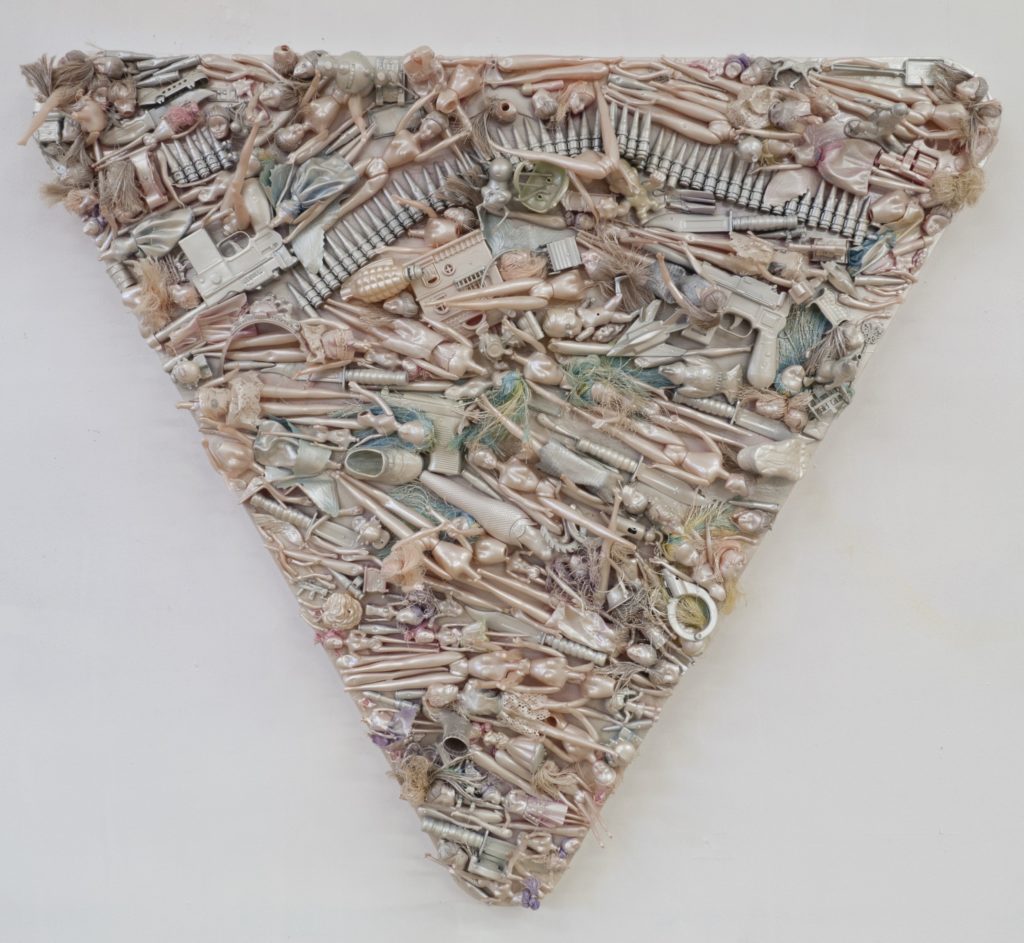
NADEGE: As an Artist in Residence, how has the program contributed to your artistic process?
MARGARET: I enjoy the community of other AIR 17 residents, artists, and teachers. Glancing at everyone’s latest projects has motivated me to get work done and create. During open studios events, meeting different people has been important; connecting me to the Brooklyn community
NADEGE: We just honored Veteran’s Day. Your work is timely addressing prevalent issues with military and patriotic objects. How are they relevant to your artistry?
MARGARET: As my children grew up, I became more interested in politics and the world around me. I created seatings for day laborers at an event called the Brewster Project in Brewster, New York. Observing men waiting for jobs inspired me to create seatings with symbols of their countries. This propelled me to start looking outward to what was happening around me. For the Iraq war conflict, I created wall pieces with toy soldiers. I created multiple pieces with children’s toys dealing with consumerism. The Sandy Hook shooting in Newtown, Connecticut occurred near my home and led me to create pieces dealing with gun control and gun violence.

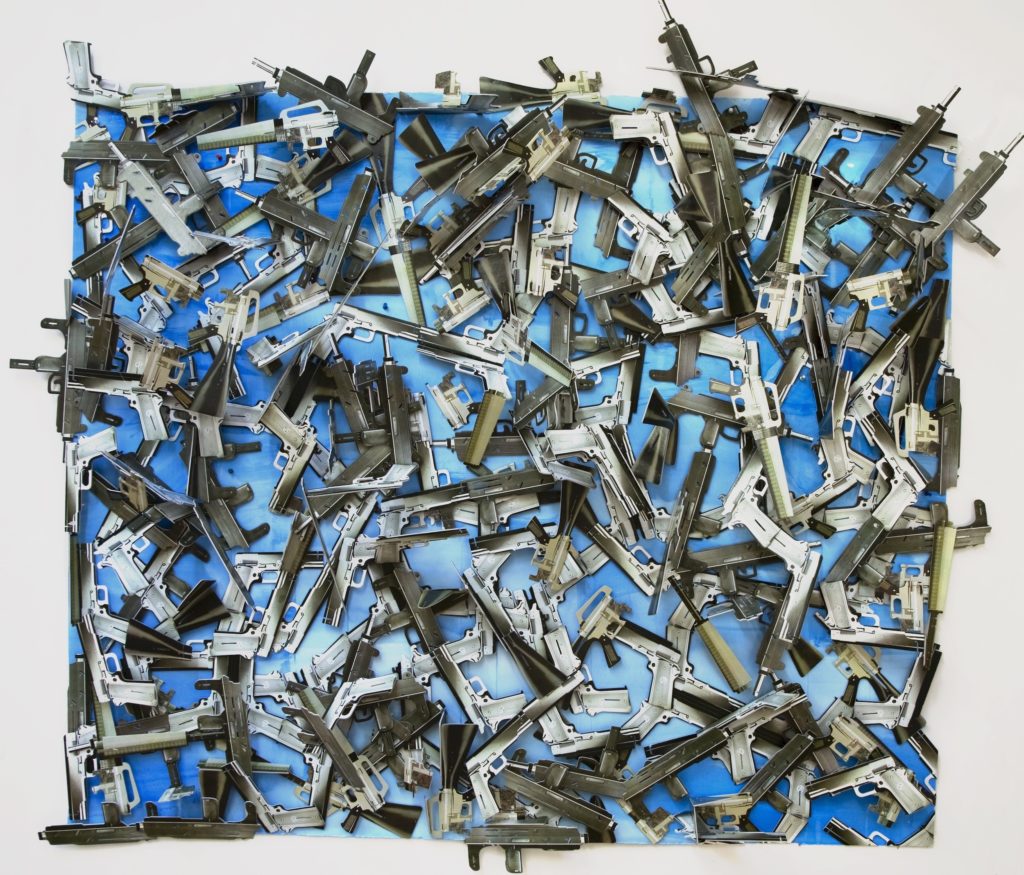
NADEGE: What methods and techniques do you use with toy soldiers, spent shotgun shells and patriotic symbolism?
MARGARET: These “found objects,” I collage into sculptures and coat with paint. Painting them neutralizes the objects and re-contextualizes them. For my current sewing project here at TAC, I am still working on a title. I hot glued empty brass capsules onto the fabric at first. Then I decided it was best to sew the capsules on the fabric, similar to sewing wounds on a patient for repair, fixing, or healing in some way.
NADEGE: Was sewing the gun shells a restorative process like restoring America?
MARGARET: I hope so.
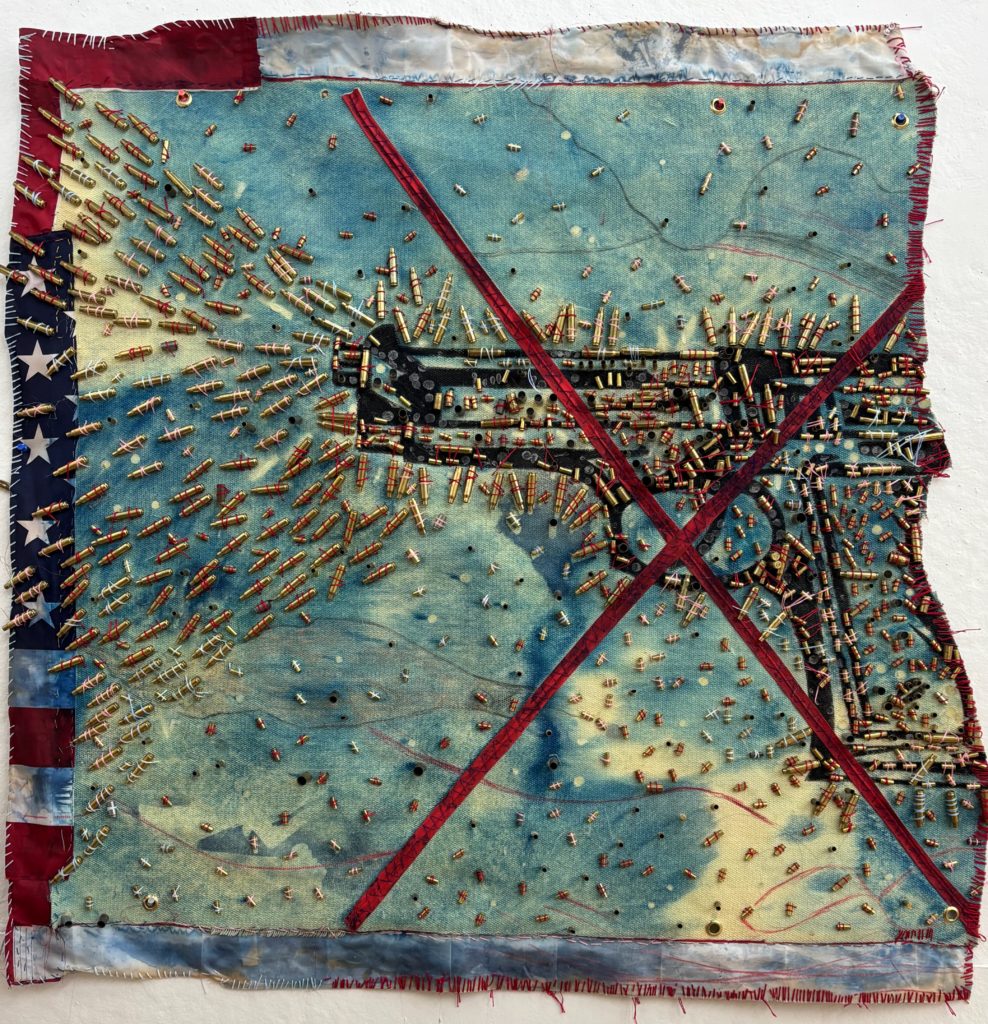
NADEGE: These past couple of months were a time for play and exploration. Did you learn any new methods or techniques?
MARGARET: I am still learning and have not applied the new techniques into my practice yet, but it is wonderful to be exposed to everything that is offered at TAC. Recently, I learned machine knitting and registered for sewing 101. I love that silk screening is here for me to continue to work on where I left off.
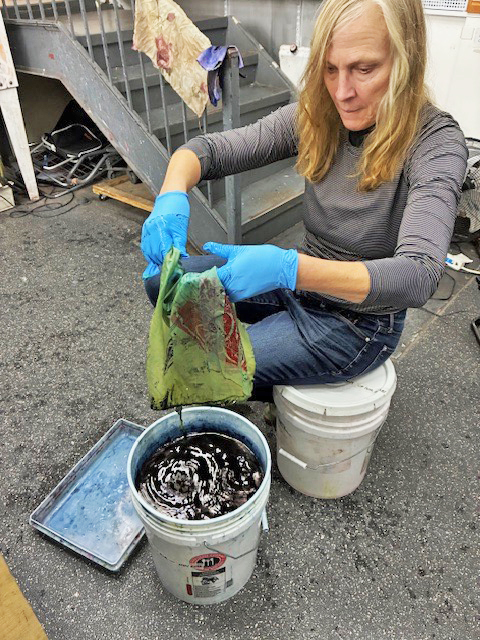
NADEGE: Working across mediums, you explore how forces shape our collective experience. What are those forces?
MARGARET: The forces are triggered emotions and responses to the occurrences in America and the world around us. My art expresses these forces, arousing the audience and viewers to ask questions. For Unsettled, I used the American flag and a gun image to strike conversations. I don’t want to tell the audience what to think. Viewing my work speaks for itself, provoking secondary reactions and asking what’s this piece about? Recently, I did an outdoor piece in Newburgh, New York on housing rights. I created a sculpture as a house with steel, plexiglas, mesh, solar lights, and painted words about everyone's rights to housing. Affordable housing is an issue in New York and many other communities. It was a new challenge to work with new materials.
In another outdoor project, I collaborated with Martha Willette Lewis for a project titled “Thoughts & Prayers.” She created the prayer flags and I made a cross out of shotgun shells. It was a community-oriented approach where we conducted workshops around the sculpture. We had community members gather, add to the flags and have conversations.
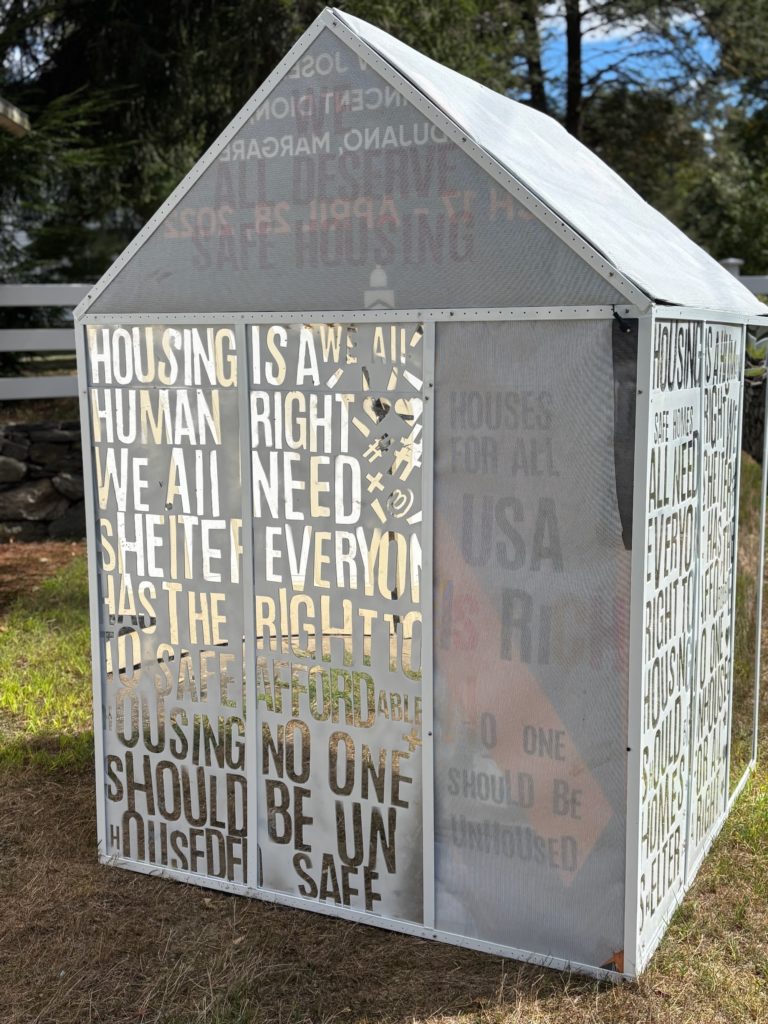
NADEGE: Speaking of new challenges, what materials were quite impossible to work with?
MARGARET: Well, at times hot glues and certain adhesives don't work for various materials. I try to figure out the best stable materials that look professional. Being a sculpture involves problem solving and using the correct materials to create your vision.
NADEGE: Any new mediums you'd like to explore for your work?
MARGARET: I’ve been using Kevlar, an interesting fabric material used in the production of bulletproof vests. I hope to incorporate some of the new textile skills I learned at TAC into new work
NADEGE: We voted for a mayor on Election Day. The Women Vote fabric from 2023 intrigued me. Could you describe that project?
MARGARET: This piece was exhibited at The CAMP Gallery in Miami, Florida in an exhibit held yearly that has the theme ”Women Pulling at the Threads of Social Justice”. I cyanotyped on an old drop cloth, then sewed different materials and stenciled statements about voting. At the time, Ketanji Jackson Brown became the first black woman to serve on the United States Supreme Court. I have created many pieces about violence towards women. The images of houses addressed the lack of safety women experienced in their homes.
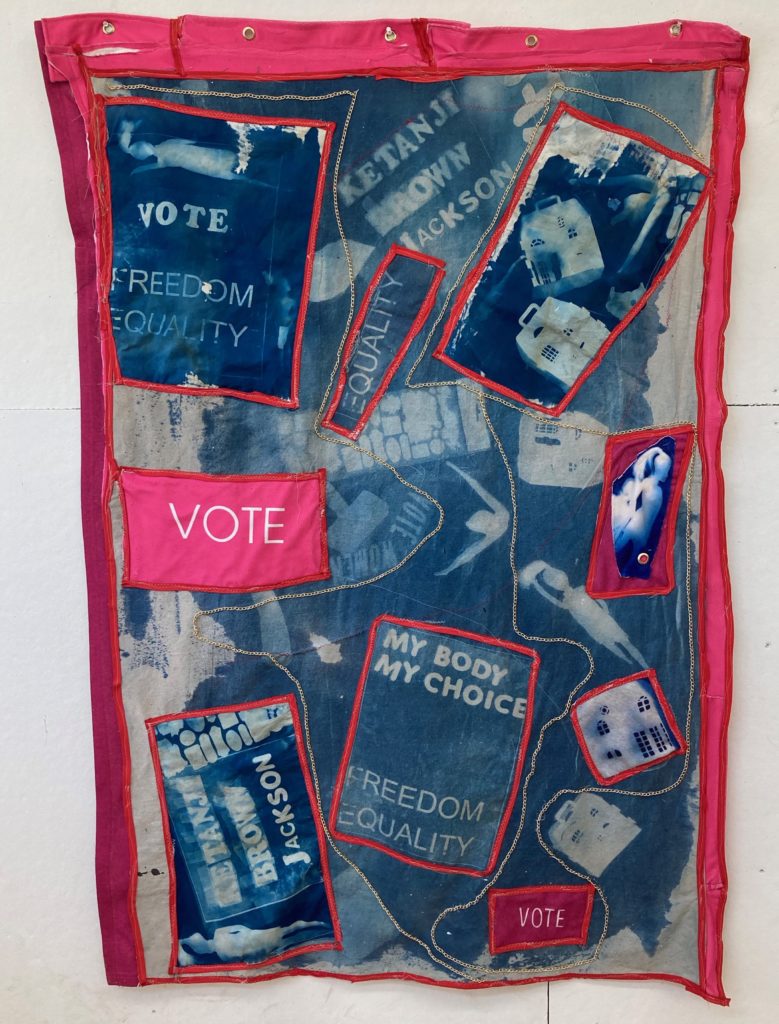
NADEGE: What’s unique about cyanotypes for you?
MARGARET: It's a cool technique to use and can be done out in the sun if you don’t have a light table. Depending on the type of paper or cloth used, different results are produced. For Women Vote, I loved the shapes of the houses and women on the fabric.
NADEGE: How have you utilized the studio space here at TAC?
MARGARET: The first few weeks, I worked in my cubicle and loved it. Then, I moved to the large gallery space near the kitchen and spread out materials on the tables. I began silk screening, using all the space available there.
NADEGE: What do you hope to achieve after your residency?
MARGARET: Make new friends and connections. Create more textiles with new processes that I learned here and integrate them into my work.
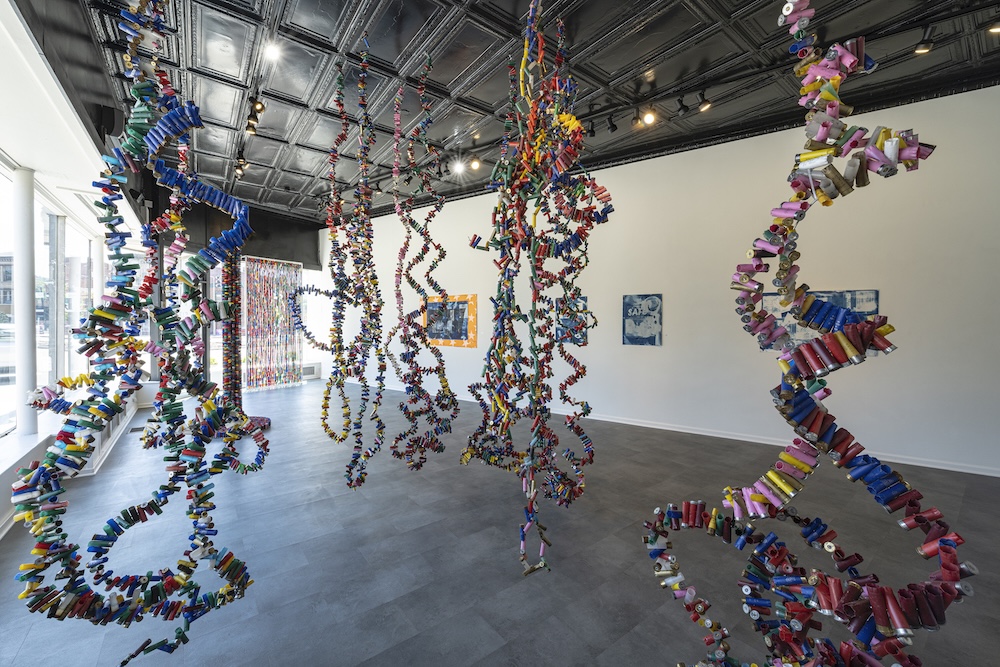
Originally from Long Island, New York, Margaret Roleke lives and works in Brooklyn and Connecticut. Roleke earned her M.F.A. from Long Island University, C.W. Post Brookville, NY and a b.a. from Marymount Manhattan College. She also studied at the Art Students League, NY and School of Visual Arts, NY. Her work appears nationally in galleries and museums. Roleke has had recent solo exhibits at Pen+Brush Gallery New York, NY, and Five Points Art Gallery, Torrington, CT. Her work has been included in shows at The Aldrich, Katonah Museum of Art, and WhiteBox New York, NY. Roleke received an Artist Respond Grant from the Connecticut Commission on the Arts in 2024. An outdoor sculpture of Roleke’s was installed in Jackie Robinson Park in Harlem in April 2025. Past residencies include Vermont Studio Center , Teton ArtLab, ArtPort KIngston and 4 Heads Portal at Governors Island, NYC.
About the AIR program:
TAC AIR combines studio access with a rigorous interdisciplinary curriculum, and regular critical dialogue, providing residents an opportunity to learn and explore the textile medium, and an alternative to traditional higher education programs. The residency culminates in a group exhibition produced and hosted by TAC. Since 2010, TAC AIR has graduated over 100 artists and designers whose work continues to further textile art within the fashion, fine arts, design and art education fields.